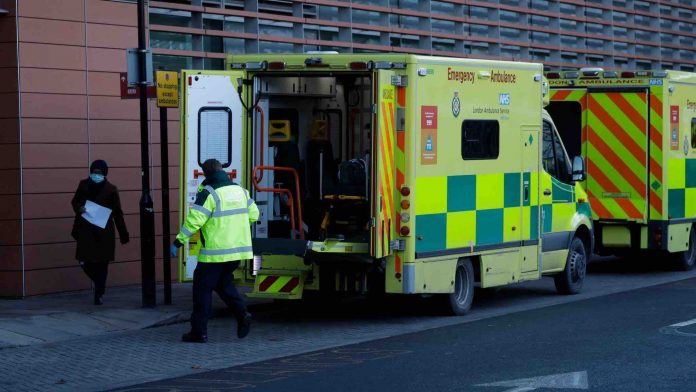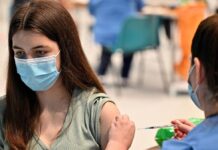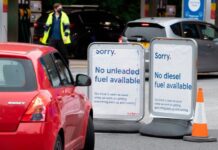The vast majority of Scotland’s central belt will remain in Level 2 restrictions as Nicola Sturgeon delayed the easing of COVID measures for many parts of the country.
The first minister said there would be a “slight slowing down” in the lifting of lockdown rules for much of Scotland amid the spread of the Indian variant of coronavirus.
Giving a COVID update to the Scottish Parliament, Ms Sturgeon said there was hope the rollout of vaccinations was “opening the path to a less restrictive way” of dealing with the virus.
But, with not all adults having yet received two doses of a vaccine, the first minister told MSPs: “We are not quite there yet.”
She added: “As we make this transition – just to compound the challenge – we are also dealing with a new, faster spreading variant.
“This is, of course, a new development that has arisen since we set out our indicative route map back in March.
“All of this means that at this critical stage – to avoid being knocked off course completely – we must still err on the side of caution.”
Edinburgh and Midlothian, Dundee, East Dunbartonshire, Renfrewshire, East Renfrewshire, North, South and East Ayrshire, North and South Lanarkshire, Clackmannanshire and Stirling have not yet met the criteria to see restrictions ease, Ms Sturgeon said.
As a result, those areas will remain under Level 2 restrictions.
However, another 18 local authorities will see restrictions ease from Saturday to move down to Level 1 measures.
These are Highland, Argyll & Bute, Aberdeen City and Aberdeenshire, Moray, Angus, Perth & Kinross, Falkirk, Fife, Inverclyde, East and West Lothian, West Dunbartonshire, Dumfries & Galloway and the Borders.
And Glasgow will move down from Level 3 to Level 2 from midnight on Friday.
Under the Scottish government’s COVID route map, the whole of Scotland had been scheduled to move into Level 1 restrictions from next Monday, 7 June.
The country had moved to Level 2 restrictions last month, although a spike in infections – thought to be driven in large part by the Indian variant of the virus – forced ministers to keep the entire Glasgow City Council area in Level 3.
Last week, Ms Sturgeon said Glasgow had an “uncomfortably high” number of COVID cases despite “signs of progress” in limiting infections.
Level 3 restrictions mean pubs, bars and restaurants can’t serve alcohol indoors and must close at 8pm, while gatherings inside other peoples’ homes are barred.
Under Level 2 restrictions, pubs, bars and restaurants are allowed to serve alcohol indoors, six people from three households can meet inside homes and stay overnight, and indoor group exercise classes allowed for over 18s.
And under Level 1 restrictions, there is even greater flexibility on social mixing and all leisure and entertainment businesses – apart from nightclubs – can open.
People are able to travel anywhere in Scotland in Levels 0, 1 or 2 but must not enter a Level 3 or 4 area unless they have a permitted reason like going to work or caring for a vulnerable person.
Ms Sturgeon’s decision to delay the easing of restrictions for much of Scotland will add to pressure on Prime Minister Boris Johnson to postpone a further reopening in England.
Stage four of Mr Johnson’s roadmap for easing coronavirus rules – when the prime minister aims to remove all legal limits on social contact – is scheduled to take place from 21 June.
But there is growing doubt over whether the prime minister will be able to keep to that date due to the spread of the Indian variant – now renamed as the Delta variant by the World Health Organisation – within the UK.







